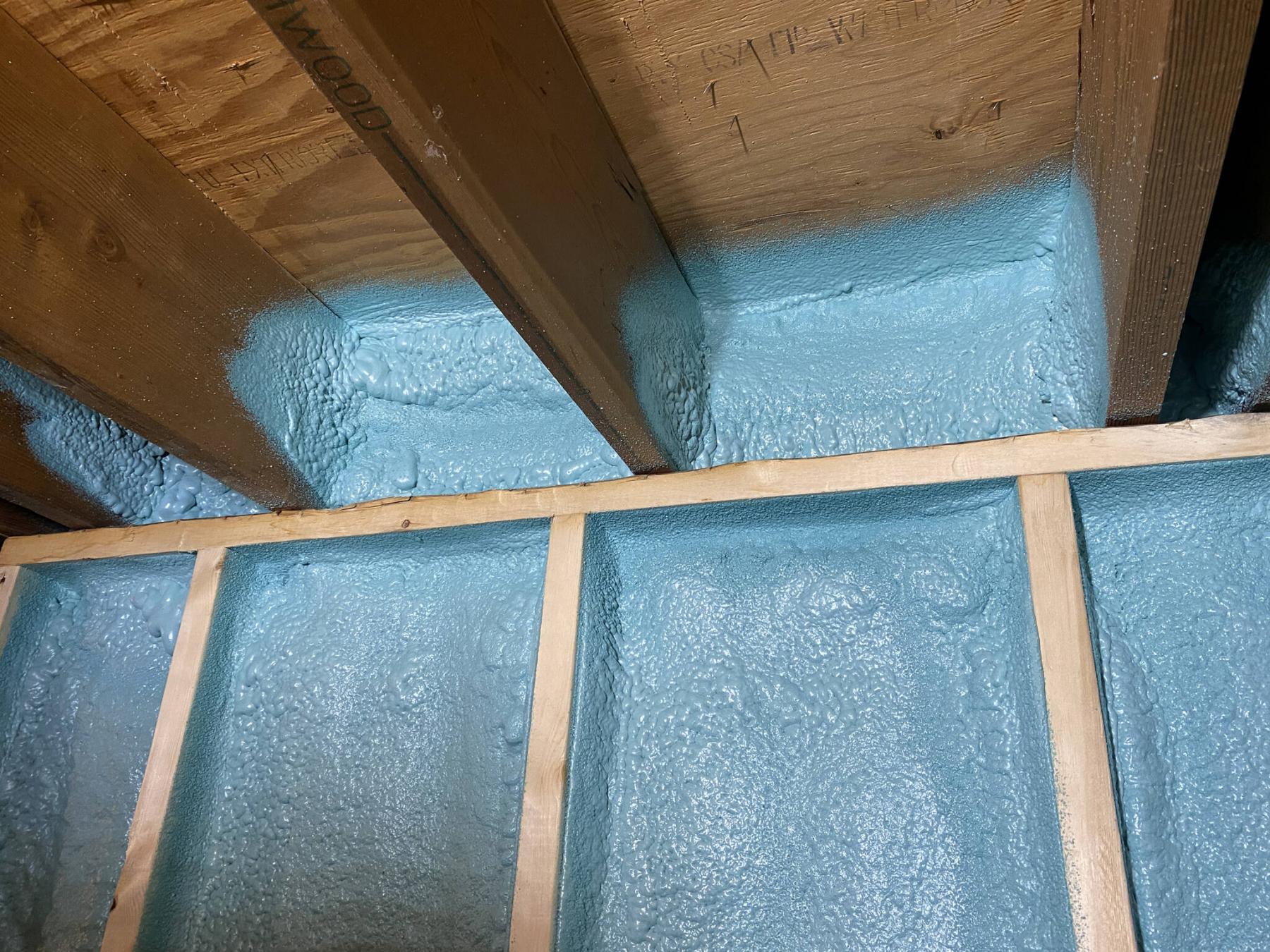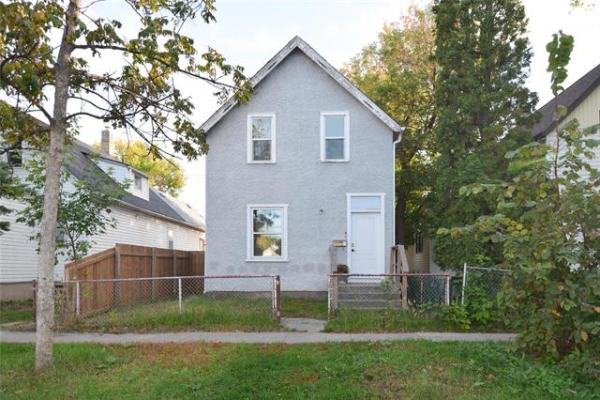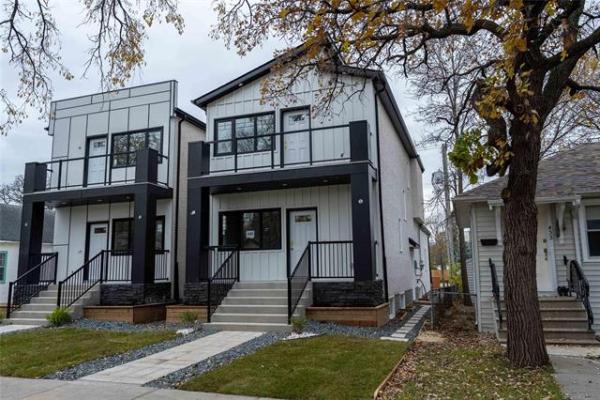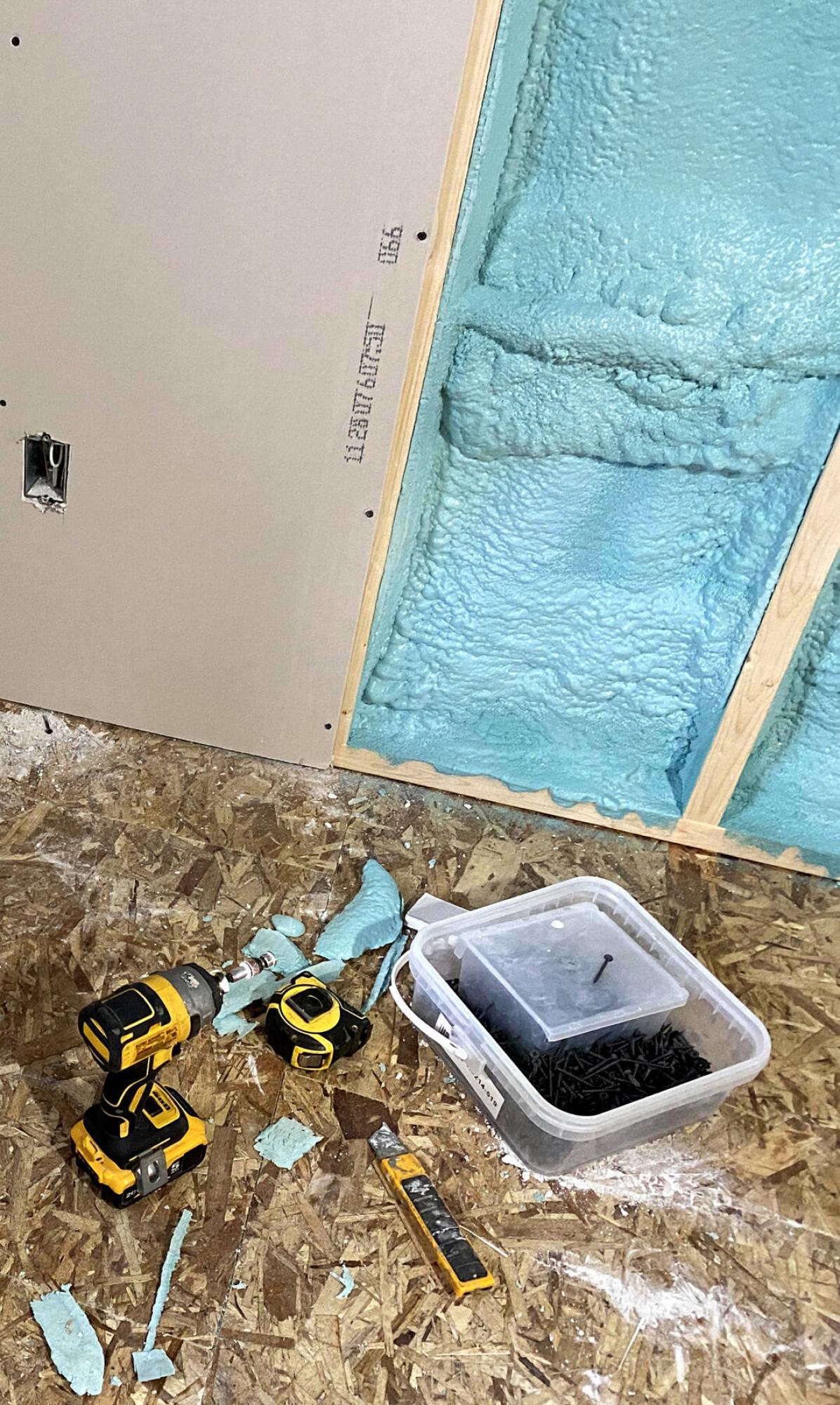
Before the drywall process can begin, it is imperative to shave off any excess spray foam.
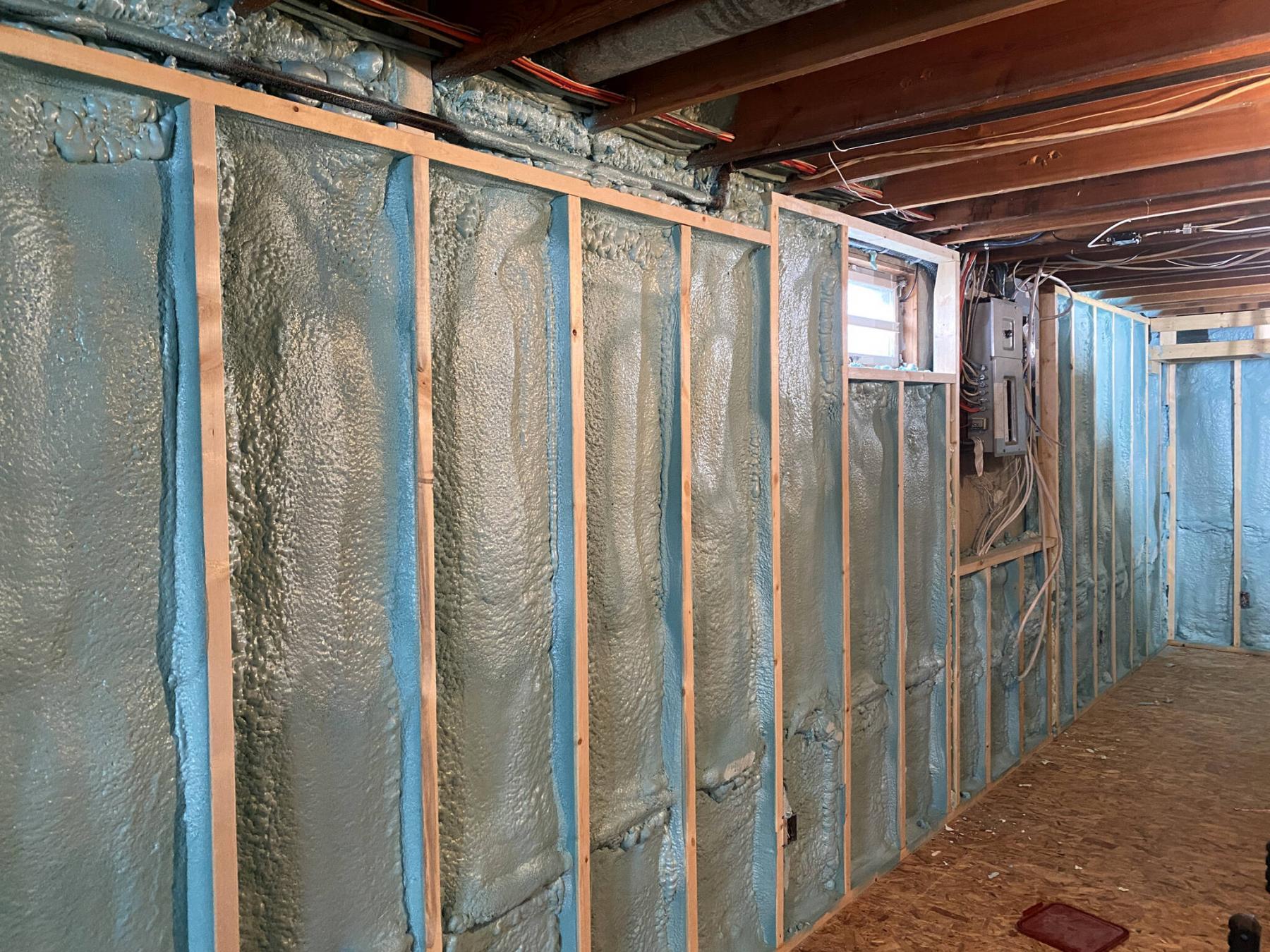
The spray foam specialist carefully fills every cavity along the entirety of the exterior walls.
When embarking upon an entire basement renovation from concrete walls to fully finished, the initial steps must involve the preparation and assurance that the lower level is fully sealed and insulated.
Traditionally, this requires an exterior wall framework of 2x4 studs adjacent the concrete façade, whereby each cavity is filled insulation, to then be fully dressed with a thick poly, taped at all seams and sealed along all edges — a laborious series of tasks. In recent years, a simpler and more effective process has been developed.
My current lower-level project first received a subfloor which consists of 24-inch by 24-inch Barricade subfloor air plus panels with air gap technology. This allows the framing of the walls placed directly atop the subfloor surface, without the need to first lay down pressure-treated lumber along all proposed wall locations. Once the walls are framed, the electrical is then run through the studs to all proposed outlet locations, and lighting instances and appropriate switches, which will be subsequently tied-in to the electrical panel. Any intended audio-visual and hardline networking feeds is also introduced at this time. Once the various circuitry has been established, the insulation and vapour barrier along all exterior walls comes next. For this project, we contacted the good folks at Warm Home Insulation, and requested their spray foam application process to expedite the process.
Spray foam insulation is made of two composite materials that, when combined, undergo a chemical reaction causing them to expand. Once the reaction is complete and the spray foam dries, it maintains its final form and insulating properties. And because the spray foam travels at a high velocity during application, the foam fills and seals tiny nooks and crannies, cracks and gaps that are often missed during the installation of traditional fiberglass insulation. Furthermore, the spray foam process upon completion also provides the necessary vapour barrier element, negating the need to introduce poly along the studs and framework, which can be challenging to fully seal along the edges adjacent the joist cavities of the floor level above.
As the process was unfolding, the spray foam specialist carefully fills each stud cavity just enough, so that the foam once fully expanded does not overshoot the outer plane of the studs. Although this does occur on occasion, the dried foam is easily cut away and flush with the stud face using a utility knife.
The other feature that makes this process superior to filling stud cavities with traditional batts of fiberglass insulation, is the spray foam’s ability to reach and fill the gap between the backside of the framing studs and the concrete wall, completely sealing the exterior wall along the far side, greatly decreasing the potential for an air and/or moisture breach through the wall. Unlike the fiberglass batts plus poly method, spray foam quickly and efficiently fills the joist cavities of the floor above along the top of the newly framed walls, eliminating potential “cold spots”.
Although the spray foam process greatly benefits most projects, there is one drawback that should be mentioned – introducing or modifying service lines (electrical, plumbing, a/v) within any walls that have been spray foamed can be tricky, if not unlikely. At a past jobsite, the homeowner had elected to spray foam his attic prior to the proposed kitchen expansion, which then precluded me from easily introducing multiple slim LED pot lights along the ceiling below the spray foamed attic. As such, the entire ceiling in that area was strapped with 2x4s, and re-drywalled to allow a cavity through which the required electrical feeds could be run to each pot light location. It was an unfortunate oversight, but it all worked out in the end.
Insulating between studs is a relatively easy process using batts of insulation. However, applying the vapour gets somewhat more complicated as every seam along every edge and at every electrical box must be properly sealed, or risk an air and moisture breach. The spray foam insulation process is efficient, and ensures a high level of confidence upon completion, which is exactly what is needed before the walls are permanently closed-up with drywall. Thanks Warm Home, job well done!
RenoBoss.Inc@outlook.com

